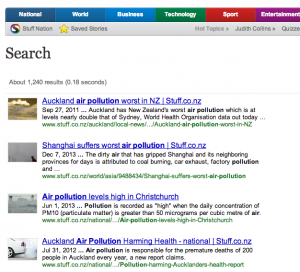The Daily Mail (and the Telegraph) recently ran puff pieces advertising a new ‘drinkable sunscreen’
Those who make the product, which is available to buy, claim that once the elixir is ingested, molecules of the product vibrate on the skin to cancel out 97 per cent of UVA and UVB rays.
Actually, the Telegraph headline was “Could this be the first drinkable sunscreen?”, and, following Betteridge’s Law, the answer is “Fsck, no!” A blog at the Guardian has a good demolition of the stories, and the illuminating byline
Dean Burnett is acutely aware of how many ways he could be sued if he wrote his initial reactions to the articles about this sunscreen. He is on Twitter, @garwboy
British libel law has been modified after the notorious attack on Simon Singh, but it’s not surprising that no-one wants to be a test case for the new law.
After seeing the reaction, the Mail has at least modified their article to add a concluding warning
Hermoine Lawson, spokesman at the British Skin Foundation, said: ‘We would advise extreme caution of any product claiming UV protection using methods not supported by clinical research.
‘When it comes to an issue as serious as preventing skin cancer, customer testimonials cannot take the place of scientific evidence, for which this particular product cannot provide.
The Telegraph has a story about the implausibility of the claim and the lack of supporting evidence, though it carefully doesn’t mention how you might have come to hear about the claim, and there certainly isn’t an apology or a retraction.
That’s all on the other side of the world. Here, where we have one of the highest rates of melanoma, you’d expect a bit more of a clue about sunscreen. But, no, One News has the story. They don’t have the testimonial from someone who used it on a toddler, but they do have the inventor claiming it is effective for more than 99% of people.
Although One News just describes them as a US skincare company, they have a New Zealand distributor with a New Zealand company registration and .co.nz website, and a whole bunch of ‘harmonized water’ products with superficially implausible claims, and they do include the ‘sunscreen’ and the claims:
•Neutralizes UV radiation
•Allows for increased sun exposure (30x more than normal)
•Enhances tanning effect from the sun
Perhaps someone might like to ask the Advertising Standards Authority to verify that the claims are indeed valid and substantiated?
